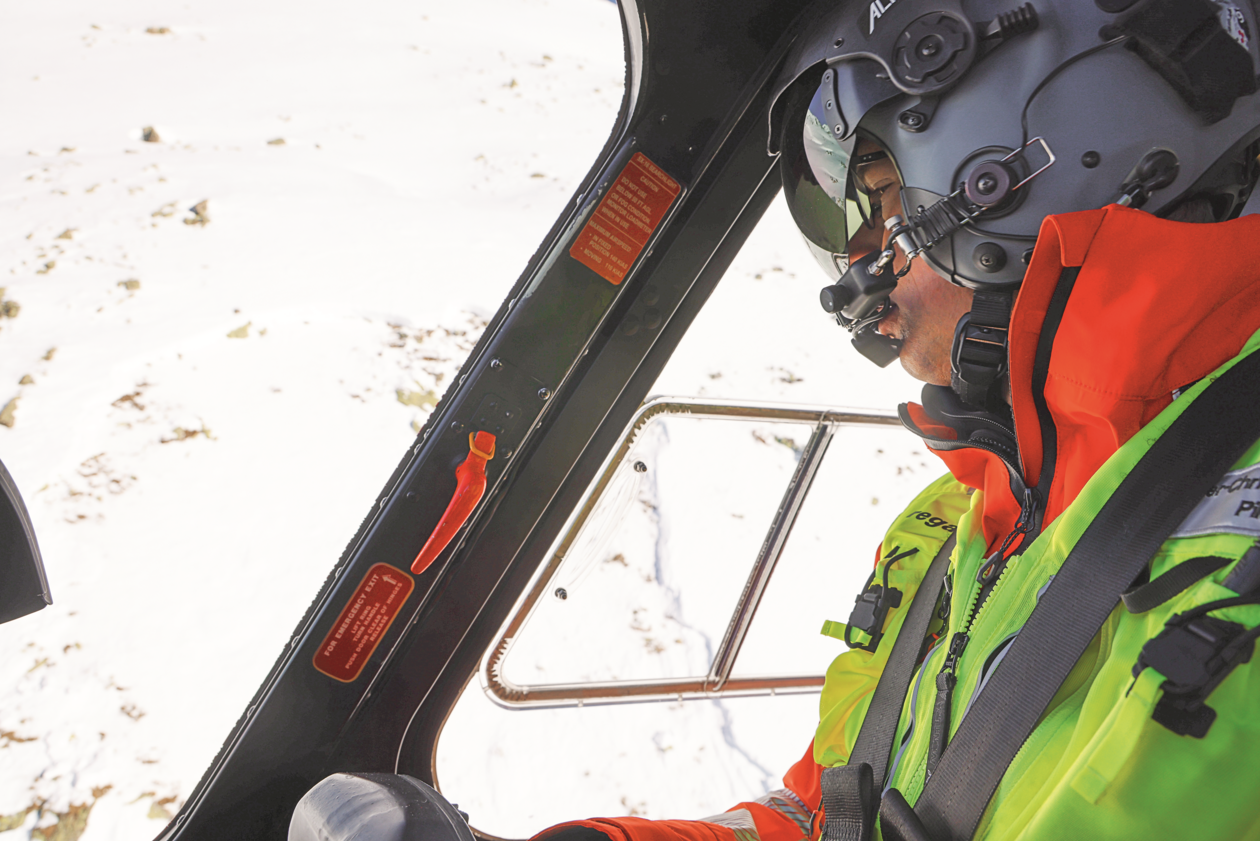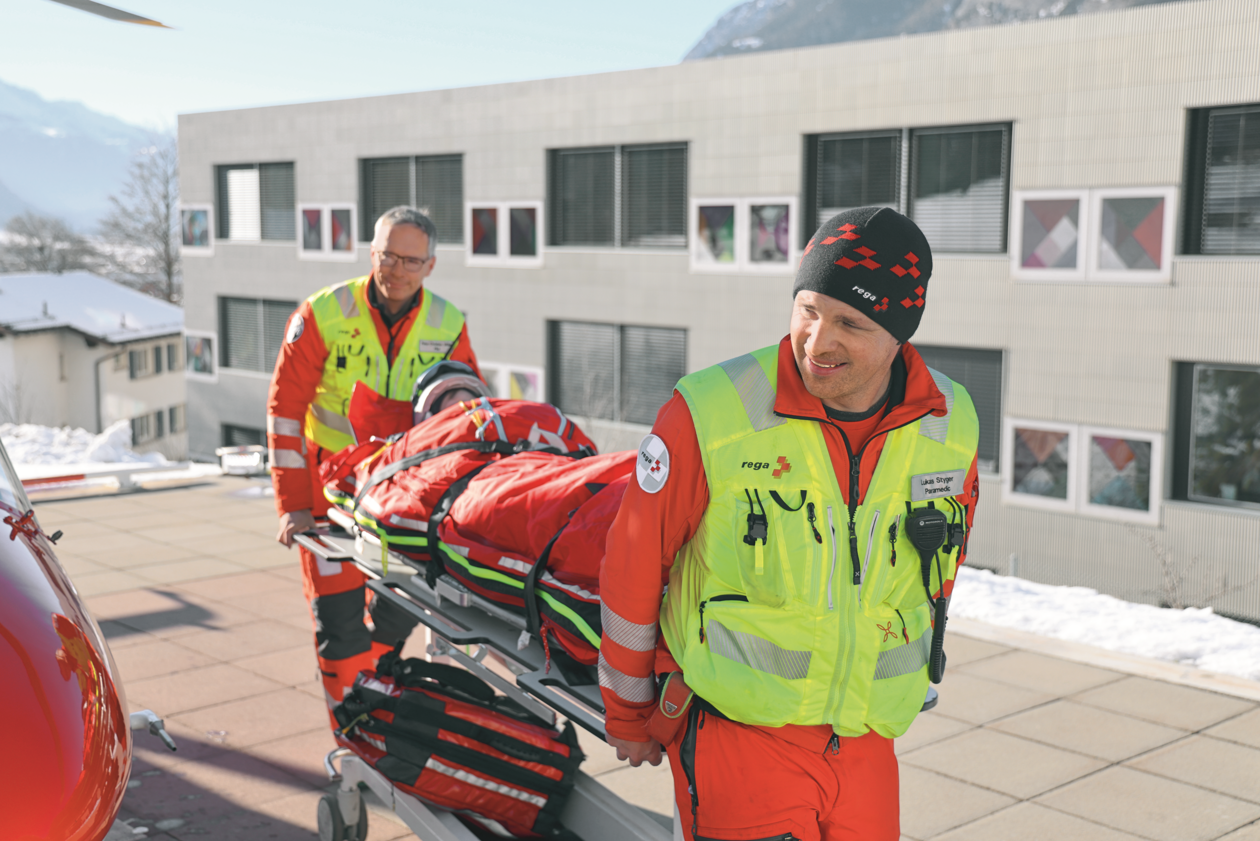It’s a Saturday between Christmas and New Year. While still handing a patient over to the emergency department team at the hospital in Thusis, the crew of Rega 16 is called out on a new mission. Shortly after noon, the AgustaWestland Da Vinci rescue helicopter takes off from the hospital landing site, and pilot Peter Christian “Mulo” Müller heads for Davos. While paramedic Lukas Styger points out a hang-glider circling in the distance, emergency flight physician Bettina Gruber re-reads the mission report in the cabin: an avalanche below the Gfroren Horn south of Davos; no details of anyone buried beneath the snow.
Extensive preparations
During the flight to Davos, the mood on board is calm and focused – that’s no coincidence. Before the start of the winter season, the helicopter crews, together with other Rega departments and teams, make numerous detailed preparations for the winter season. The crew members complete a theoretical refresher on avalanche missions. The equipment used on the mission and personal protective equipment are checked, and the crew’s knowledge of how to act on a mission and the main points relating to medical care for patients who were buried under the snow are refreshed. In addition, the crew members undergo a practical search training exercise with the helicopter in order to refamiliarise themselves with the equipment. An LVS avalanche transceiver and a RECCO reflector are hidden in the snow, and the pilot and paramedic have to localise and mark the devices from the air. Finally, the daily morning crew briefing at the base is adjusted: As of the start of the winter season, particular attention is focused on the current risk of avalanches in order to be mentally well prepared for a possible avalanche mission.



